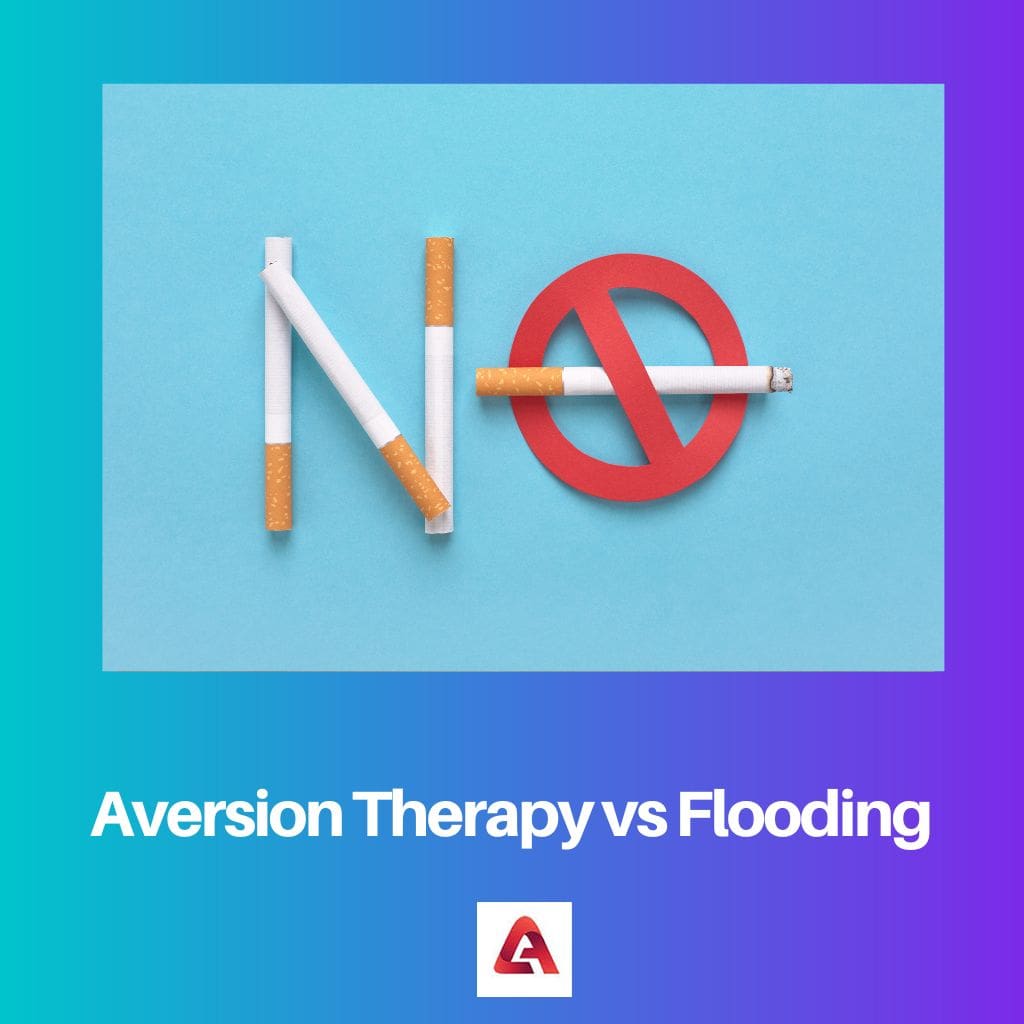Therapy is the treatment of mental or psychological disorders by psychological means. It helps boost self-esteem, reduce anxiety, and improve social and community functioning.
Supportive psychotherapy helps patients deal with problems related to mental illness and has an impact later in life.
Aversion therapy is a behavioural or treatment method aimed at reducing unwanted behaviour of people through conditioning.
Flooding also knows as implosion therapy. It is a sort of therapy that simultaneously exposes the affected person to their worst fears.
Flooding is a method or treatment in which the individual is exposed to the high or strongest intensity of anything stimulus or object they are scared of or have anxiety over.
Key Takeaways
- Aversion therapy uses unpleasant stimuli to discourage undesirable behavior or habits, helping clients replace them with healthier alternatives.
- Flooding exposes clients to fear-inducing stimuli in a safe environment until the fear subsides, helping them overcome anxiety and phobias.
- Aversion therapy and flooding are forms of behavior modification, but they target different issues and use distinct techniques.

Aversion Therapy vs Flooding
Aversion therapy is a psychological therapy done to remove undesirable behaviours or habits by associating them with something negative such as shock or bad taste. Flooding therapy is a behavioural therapy that involves exposing a person to a feared stimulus at a high intensity to reduce their anxiety or phobia.
Comparison Table
| Parameters of Comparison | Aversion Therapy | Flooding |
| Definition | It is a behavioral therapy or a treatment method to reduce unwanted behaviors and habits. | Flooding is a technique to treat or overcome fears and phobias. |
| Uses of therapy | It is used to treat behaviors like bad habits, smoking, addiction, etc | It treats phobias, PTSD, different disorders, and painful memories. |
| Advantage | It helps to develop a form of resistance to habits and behaviors because no one wants to repeat negative experiences. | It helps people overcome fears because continuous exposure to phobias decreases the level of anxiety or tension. |
| Disadvantage | It doesn’t treat or eliminate the root of the problem and focuses on behaviors. | It could be traumatic, and there is a chance that fears spontaneously reappears. |
| Treatment | Pairing, e.g., Putting unpleasant tasting materials at the fingernails to avoid nail chewing or using an emetic with alcohol. | Exposing the patient to their fears using psychotherapeutic relaxation techniques. |
What is Aversion Therapy?
Aversive therapy is a therapy or method of treatment which is used to get rid of unwanted and problematic behaviours. It is also called aversive therapy or aversive conditioning.
It is used to help people quit their unwanted bad behaviours and habits by associating them with something unpleasant.
There are some Addictive behaviours, like drinking alcohol, smoking, gambling, etc., and aversion therapy is used to treat these behaviours.
The treatment used for aversion therapy depends on the unwanted conduct or behavior being treated. Chemical aversion for alcohol use disorder is used in aversive therapy.
In this method, nausea is brought chemically to lessen a person’s yearning or craving for alcohol and put unpleasant-tasting materials at the fingernails to avoid nail chewing.
Some methods used for aversion therapy:
- Electric shock is used as a treatment method.
- Another kind of physical shock, e.g., a broken rubber band
- Unpleasant smells or tastes to avoid the bad behaviour
- Negative image through visualization
- Shame is also used as a treatment method.
What is Flooding?
Flooding is a method of exposing someone to their phobias. It is a methodology of exposing a person to the strongest and high-intensity fervency of an impulse or object that a person fears or is fright.
In this method, the person suffering is exposed to tension or stress at its extreme intensity. The therapist recommends his patient relaxation techniques or method which helps perform the flooding activity.
Because with the help of this therapy affected person interrupts the affiliation of the occasion or stimulus by feeling tension and stress.
For example, if a person suffering from social situations or social anxiety is recommended to attend any celebration party or reception. But at that time, his clinician must be with him.
Main Differences Between Aversion Therapy and Flooding
- Aversion Therapy is a treatment method to eliminate people’s unwanted and problematic behaviours.
- Flooding is a treatment method of exposing people to their phobias to overcome them.
- Aversion Therapy is very helpful in treating people’s addictions, such as: Drinking alcohol, Smoking, Gambling
- Flooding or Vivo therapy is very helpful in treating anxiety and PTSD etc.
- Aversion Therapy also has some side effects, e.g., it can increase anxiety and PTSD in patients.
- It is difficult for patients to stick with the treatment plans. It doesn’t treat the problems like PTSD completely. The problem can appear again after some time.